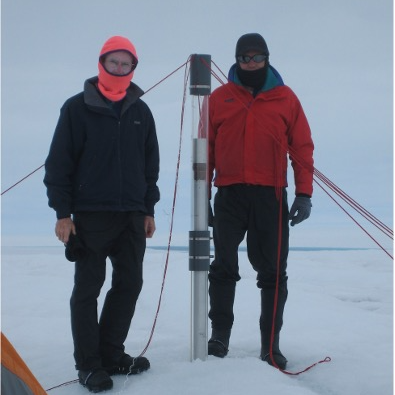Center for OLDest Ice EXploration (COLDEX) Ice Diver Project
Dale’s COLDEX team is working toward testing in Greenland of the University of Washington Ice Diver melt probe, preparatory to deployment in Antarctica as part of the larger COLDEX project. A melt probe can descend through ice with fewer resources than are required for conventional drilling. It thus allows searches for 1.5 million-year-old at several Antarctic locations, in support of the COLDEX goal of finding the oldest possible ice core climate records. The COLDEX version of the Ice Diver incorporates an optical dust logger, which will be used to measure the age of ice versus its depth below the surface (by counting ice age dust cycles). Dave and Dale’s collaboration is focusing on curriculum for Dave’s project-based engineering classes as well as the Astronomy club. Students will use their understanding of warming and phase change to experiment with simple melt probes and develop models to predict power needed melt through different depths of ice. The astronomy club will learn about icy moons in the outer solar system and how they may relate to lakes beneath the Antarctic ice sheet.



